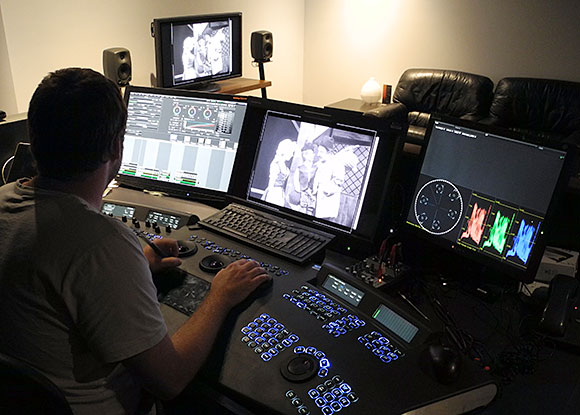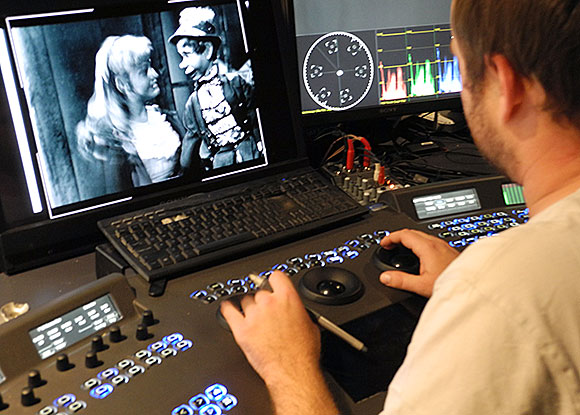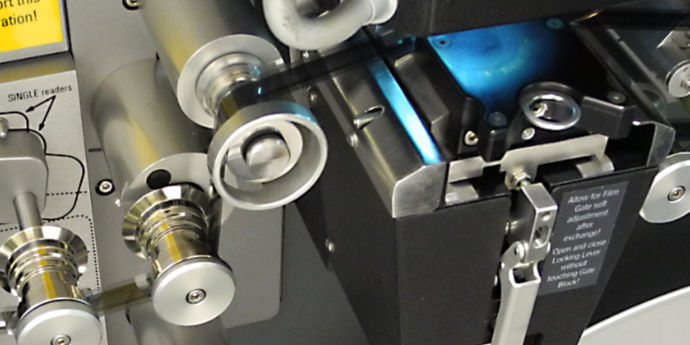It was with excited anticipation that I returned again to Cutting Edge to see first hand the high resolution scans of the Tarax Show kines. With high quality, high resolution scans from the film, the project to restore these productions for DVD release could now move forward.
Justin had scanned all the reels sent, except for “Merry Make Believe” (1959), which was warping and jumping off the Spirit Datacine motion-sensing sprocket and losing registration. This reel had noticeable “vinegar syndrome” — a form of chemical degradation that affects acetate film bases and causes the material to shrink and warp. I would need to find another scanning solution for that reel (more about that in a later post).
Back in the colour grading suite at Cutting Edge, we reviewed the three full-length 16mm kines which had scanned well on the Spirit, as well as the 35mm animations.
As requested, Justin had set the colour saturation to zero — to force it to pure black and white. This would ensure that any coloured artefacts caused by film ageing or by chemical effects would be eliminated.

Overall the levels were pretty consistent, but needed some adjustment in places. In the era of analog black and white television, each camera had a “camera control unit” — a console in the control room with an engineer sitting in front of it constantly monitoring and adjusting the video levels on a video “scope”. Even modern digital editing and colour grading tools replicate the display found on these old analog scopes.

Justin planned to do more work to grade the levels prior to handing over the scans.
One noticeable distraction was jitter — the constant up and down and sideways vibration of the image. Subtle but noticeable. There are a variety of possible sources for this — starting with the film recorder which made these kines over 50 years ago. The Spirit Datacine can also slightly mis-register the film which can cause visible jitter. This is particularly the case for old or damaged film where the sprocket holes are not in mint condition.
Not surprisingly, film grain was also quite visible. These are copies on film after all!
As an aside, Justin demonstrated grain reduction and jitter stabilisation using his system. The grain reduction on flat areas improved the image. So did the stabilisation. However his system does only semi-manual stabilisation — he has to manually setup trackers for each shot — which is not practical.
I had already started to explore digital film restoration software, such as PFClean from The Pixel Farm in the UK. We agreed that a specialised tool would probably do a better job on restoration.
We agreed on Apple ProRes HQ as the delivery format. This preserves the quality of the image while achieving a compression of about 6:1 over uncompressed data. Each 50 minute reel would come in at just under 150GB — not a problem for today’s portable hard drives with fast USB3 interfaces.
I left two 4TB disks with Justin and it was time to depart for home again.
